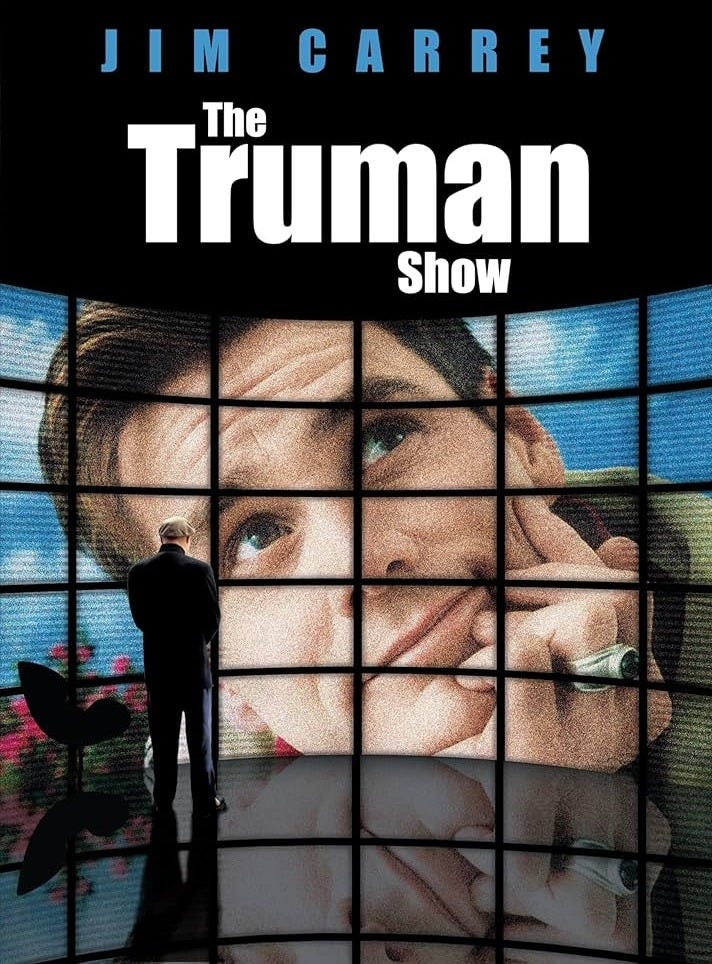A culture that is merely preserved is no culture at all. 1
Mark Fisher, Capitalist Realism
This chapter was written in the summer/fall of 2022 for a manuscript I was working on with a friend. It was the result of studying “America” through the eyes of Jean Baudrillard and other writers, which led to this diatribe. I now understand the true American “model” is the nuclear family and with it, compulsive monogamy and therefore sex-negation. This model of course, typically resides in the residential "home,” which is constantly remodeled.
In 1986, Jean Baudrillard described the perfect features and deluded imaginations of an idealized America: a utopia achieved. America naively presents itself as if it has always been itself. The continuity of the American self-image is the defining feature of the culture. As Donald Glover, aka Childish Gambino sings, this is America, guns in all areas. For Baudrillard, the country’s power is as a global enterprise: the “advertising of image” in a type of “promotional hype.” 2 The home of instantaneous dreams for expansion and emancipation: an instant dream home.
[America] used to be a world power; it has now become a model (business, the market, free enterprise, performance) – and a universal one – even reaching as far as China. 3
The American continent as a dream home has its origins as a settler colonialist project: a system of power where one clears another and seeks to replace the native population with settlers. The practice of control through power over people—mass incarceration, the virtual world, the psychiatric medical model—through ideological dominance is quintessentially Americana. For this analysis of American culture, there are three relevant terms to define:
o model: a system or thing (conceptual framework) used as an example to follow or imitate, e.g., colonialism.
o remodel: procedures, sequences, or practices that result in the reification of the conceptual framework that are based on simulations.
o simulation: the imitation of a real-world system, e.g., by a computer for data, with the purpose of remodeling key characteristics or behaviors of the selected system or process and/or evolving an existing model.
If one considers the historical practices of the American continent—control through the domination of space and time—as a colonial structure (model), it requires the perpetual elimination of native cultures to be replaced by a settler society (remodel). The simulations of the model, e.g., armed militias, are centered on the domination and conquering of space-time. The old is remodeled: home of the brave, individualized self, gone with the original. On the surface, America is not branded as an obsessive imperial empire with individualized land ownership; this understanding involves history, and no one has time for that, e.g., the utopian vision of the first Pilgrims.
For example, through the conceptual lens of ownership, Christopher Columbus surveyed and then wrote on his immediate encounter with the Indigenous peoples and of what would become of America. He noted that the natives “willingly traded everything they owned.” Columbus had an instantaneous vision of subjugation: “They would make fine servants.” 4 His documentation was based on the Indigenous people as subjects, e.g., their naiveté causing them to cut themselves on the Pilgrims’ swords. Columbus was not interested in the native culture, including the absence of “land ownership.” He would survey the land as well as the individualized people to then apply a model for optimization and dominance.
The simulation of the model is then remodeled to optimize the model. This re-build of the present model through simulation—and of course, make sure to forget the past—is the apotheosis of a primitive insta-culture. Carried forward, instantaneousness occurs at the intersection of surveillance and achievement-subjects: time (self) as a simulated model that is remodeled via subjectivity and optimization. In this essay, the burnout and passive nature of American culture will be connected to the obsession with space, measurement, and time to complete goals (remodels). This is carried out by isolated and alienated subjects who maintain possessive subjectivity, i.e., self as an asset or self-possession.
INSTA-CULTURE
The ideological implications of a theory of the world that always begins in the present should give pause. 5
Rob Urie, Zen Economics
In his 1955 book, The Sane Society, psychoanalyst Erich Fromm described push-button power 6 in relation to the instantaneousness of the original Kodak camera. The Kodak slogan was, “You press the button, we do the rest.” 7 This was a novel concept at the time: film (simulation) would be developed by a company (remodel) rather than the photographer (model). Instant film. Push-button power represents the passivity of American culture: the replacement of critical thinking with data about “what it is like to be a subject.” The human organism is in a symbiotic relationship with the experimenters who want us to do nothing and know nothing, while everything is instantly done for us. This culture of mindlessness that is based on instantaneousness, engenders dependency contracts for “success” within the model.
A culture of accomplishment is one of competition for improvement, which, in a hyper-individualistic society, positions the self (or nation) as a valuable and optimizable project. Based on this utopian version of culture as achievement-oriented, insta-culture, can be defined as a culture of momentary reflexivity. Here, aptly symbolized by the rise of Silicon Valley technology. Compare photos: Instagram. Communication: instant messaging or DM-ing. Desire: Amazon Prime. Pleasure: insta-hook-up (Tinder, Grindr). Knowledge: AI virtual assistants and search engines. The use of our fingers is the defining feature of our primitive society: convenience, comfort, and efficiency. Fast food anyone?
Four decades ago, Baudrillard described the ideology of Silicon Valley as electronic tribalism. 8 For him, America was an obsessive society, because everything in the culture is detected, protected, and contained. 9 For example, the globalized surveillance operations of Google. America has reverted to a post-industrial model in the sense of digitalization because capital moves via the recombination of digital information rather than the building of physical structures, e.g., “building AI” or cryptocurrency.
The artificial (simulation) becomes the official (model) to be remodeled. A more concrete example is an “electric car.” A Tesla is first and foremost a mobile computer + wheels. It is a simulation of a “car” (minus the engine) that is as an “electric” car (remodel). No one calls it an enclosed iPad with four wheels. Americans don’t need new infrastructure through energy-efficient public transportation options: just remodel the existing model (personalized automobiles). The same is true of the smartphone: the smartphone is a simulation of a real phone. It is a computer with written code that is re-written and recombined based on the user’s use of the device (remodeling the model). Thank god there is a smartwatch, so humans don’t have to lug around that heavy phone anymore.
Insta-culture is a cultural form based on the hear-and-now, reflexively promoted in the here-and-now, with everything (of course) needing to happen right now! In American society, brief training of the subject in the model of hyper-individualism produces managers of the model, i.e., remodeling the self. For example, emotional reactivity (responses to virtual flows of information), is instantly uploaded in the form of cathartic Tweets or Snaps with limited characters as well as YouTube and Facebook Live Streams for instant gratification. No reflection, just status updates: instant desire. Breaking News: this is trending (happening)! Not historical and contextual, but rather, a constant remaking and recombining of now (within the existing models): a makeover of the previous.
Contemplation is relegated and buried to the mounds of data trash that are irrelevant to the now. America has no trace of history leading to the present, but a forever reflexive moment-to-moment insta-culture. There is no “America,” only the simulation of the American model via controlled experimentation, e.g., forms of social control. America is forever remodeling the perfectly existing (momentary) utopian culture. In order to generate these models for simulation, one needs to survey for data to optimize the model. Surveillance is insta-data taken by a superior from a subject (inferior). The data is used to run simulations of the existing model to remodel the simulation. Because an insta-culture requires momentary reflexivity, American surveillance (militarized, violent, omnipresent, aperspectival) is presented as a benevolent gift to the subject. Hold on, my Ring doorbell just sent me a push notification!
SURVEILLANCE AS A GIFT
The array of instruments created for global dominance—wholesale surveillance, the evisceration of civil liberties, sophisticated torture techniques, militarized police, the massive prison system, the thousands of militarized drones and satellites—will become ubiquitous in the homeland. 10
Chris Hedges, America: The Farewell Tour
I recently [August of 2022] logged on to Netflix while recovering from a minor surgery. Netflix is a “streaming service,” which implies streaming as a simulation of broadcast TV. The mindless show I found to watch while laid up on the couch was Instant Dream Home. The show is another tireless makeover concept series where design, simulation, engineering, logistics, and labor coalesce with idealized revisions of space. A “home” is represented by a residential American family home. This model of a home is to be remodeled in a strictly allocated amount of simulated time. The show opens with the excited, self-referential project leader: “All right team. Let’s move in. We are about to transform this whole house in a day! Who does that?” America does.
The premise of the show is that a team will secretly remodel a family’s house while the occupants are away for the day. Remodeling the pre-existing model (home) instantaneously, based on the forecast of simulations, while manipulating the subjects. The show opens with the team—camouflaged and disguised—on a reconnaissance of the family who will receive the gift. The idealized make-over project is an ideological mission with a specific location and a target of 12 hours. With hidden cameras and telecommunication devices, the team scouts the target with militarized coordination. As in American culture, surveillance is presented as altruistic, efficient, and rewarding. Surveying—algorithmically adding and subtracting numerical data—uses information for a scenario to build a model for simulation. Surveillance has evolved as it now moves from internal optics to the panoptic:
Surveillance power increasingly functions by moving from the centre of human attention to its peripheries – invisible, ubiquitous, waiting. 11
Simply put, the family is unaware of the surveillance and the psychological experiment, which is the control of the subject in space-time. The exterior of the house (image) is the first to be surveyed. De-historization, in the form of paint, covers the chipped and aging surface, while providing a cosmetic facelift for improved presentation (“curb appeal”). In America, a hyper-efficient, communal teepee can always be a skyscraper. During the update, the yard and trees (land) are dominated and made majestically smooth. The home is then de-territorialized with foreign material such as new dirt, grass, trees, plants, rocks, and/or a new shed for more “outdoor space.” This is a microcosm of colonial expansion.
America, along with the team on Instant Dream Home, is perpetually agitated for more space. Baudrillard claimed “agitation” is the main activity of Americans. 12 The freedom of action comes from the “possession of space,” which characterizes the “ease” of American life. 13 In the Netflix show, everything happens with instantaneity: “as quick as possible” or “as soon as we can.” The series showcases what characterizes American culture: the Hurry Up! injunction. No self-reflection or gazing because it must happen now! As the day moves on, the team bemoans, “this is taking too long,” as if the future can be optimized before it happened.
After observing how Americans are obsessed with their bodies and working themselves to exhaustion, e.g., endlessly jogging, Baudrillard noted, “This entire society, including its active, productive part – everyone – is running straight ahead, because they have lost the formula for stopping.” 14 The exhaustive nature of self-improvement in American culture, according to Baudrillard, is situated on the ludicrous inability to detach from the model:
In short, in America the arrival of night-time or periods of rest cannot be accepted, nor can the Americans bear to see the technological process halted. Everything has to be working all the time, there has to be no let-up in man’s artificial power, and the intermittent character of natural cycles (the seasons, day and night, heat and cold) has to be replaced by a functional continuum that is sometimes absurd (deep down, there is the same refusal of the intermittent nature of true and false: everything is true; and of good and evil: everything is good). 15
The “functional continuum” of Instant Dream Home requires no examination, because of the level of absurdity. Who remodels a home in 12 hours? A brakeless runaway train (model) of simulations for expansion (remodel). Whether the original sweep of indigenous land or the domination of cotton fields, the abundant space is managed for capital enrichment, i.e., wealth via infinite expansion. The owner as a subject is subjugated to the ethos of time (self) management. As the German philosopher Byung-Chul Han (2015) states, humans live in a hyper-active burnout society. 16 How about a mental health day? Oh, yeah, I don’t have any “sick-time” left.
THE OWNERSHIP OF TIME
Recently it has become more evident that attention is the basic commodity to be exploited…not time is money but attention is money. 17
David Loy, Money, Sex, War, Karma: Notes for a Buddhist Revolution
Within the utopian insta-culture, capital owns time—cognitive labor, production, reproduction, distribution—via logistics of space across durations. The sky is the limit; who owns those clouds anyway? The limitless manipulation of sequence, affect, and signs (images) in the production of psychic stimulation. This sequential accumulation process is what Franco Berardi calls semiocapitalism:
The mental environment is saturated by signs that create a sort of continuous excitation, a permanent electrocution, which leads the individual, as well as the collective mind, to a state of collapse. 18
Buddhist writer David Loy says, “Time isn’t something I have, it’s something I am, and if I am time then I can’t be trapped by it.” 19 The insta-culture tells us time is everything, but there is never enough time! No time to spare, so each must organize and manage their own time: personal and work. If you don’t have time, you need to make more time! Does anyone have the time?
Time is not owned. The social psychiatrist Eric Berne wrote that time is something that must be passed through. 20 No time resides outside of ourselves or “in” our sense of self. Ego-consciousness is time, which is to say, humans are no-thing. Time is not of the essence; it is the essence. The American insta-culture makes the possession of time sacrosanct: “we have to save time” or “she sacrificed a lot of her own time on this” and “I never have enough time in the day.” It is sinful to “waste time,” meaning, to lose one’s sense of self (model).
In Instant Dream Home, the ownership of time is paired with logistics, simulation, and histrionics. Therefore, the show is ultimately an ego-project: improvement through dramatic updating, optimizing, expressing, and, finally, self-promoted for status and value. Look at me! The ego project is a remodel of the original model: settler colonialism. The land must be surveyed for simulation, the subjects de-cultured and surveilled, to have it (land or “home”) captured. The culture is erased, and the subjects are exploited as a “gift”, i.e., aggressive inclusion and acclimation. Fascism? The U.S. did spawn eugenics and the KKK as well as “provide” boarding schools and reservations for natives.
When time can be owned and simulated in advance then labor is no longer related to an employer-employee relationship, e.g., salary. The so-called gig economy is the instantaneousness of time (work) at any time. Hustle culture means perpetual availability for the simulation of working, but no guarantees and thus hyper-precarity. The gig economy is rebranded as “flexible” and “remote” or “work-from-home,” which is the simulation of work via models that are remodeled digitally. The term “labor” has now become obsolete because capital purchases “packets of time” rather than labor.
In Instant Dream Home, scores of anonymized laborers pass through the remodeled space at the same time. This mode of production reveals the current cellularization of time. This path to cellularization is the elimination of the body barrier to capital accumulation. 21 For example, Instant Dream Home literally invests—in real time—in the projection of the future production (abstraction). Time is measured ahead of “time”. The team deploys science and technocracy to own each moment. For example, the team uses color-coded vision boards with tasks segmented into time allocations (simulations) for each section of the remodel. During the show, the time dramatically flashes in large font on the screen: 11:38 AM! Or the viewer witnesses a countdown of time during an “installation” (exhibition of newness). The central fixation of the show is to complete the goal (remodel) before they “run out of time” (simulations).
The societal myth of the Terminator 2 singularity of a super intelligent species of robots conquering the planet disguises the human symbiotic relationship with machines. According to Kroker (1994) the will to virtuality is the driver for virtual capitalism (semiocapitalism). The digital “user” is an electronic physical body that is literally in a steady state of recline. The human sits in their chair with instantaneous virtual “connection” in order to combine and recombine signs and symbols with their fingers (digits), while the dissociated body is suspended in a mesmerized state of being. Quite the experiment. Bodies are mediated via networked-computers, and, ultimately, separated with the illusion of social connectivity. These telecommunicated connections are what Berardi (2021) calls “the eternal nothingness of virtual connection.” 22
Instant Dream Home represents the nothingness of robotic and banal dialogue. The team members converse in trivial exchanges: “How bad is it?” The response, “Not great.”
GOAL TIME VS. CLOCK TIME
Since time does not pass, it must be passed through, and that means always scheduled or structured. Don’t just sit there, do something! What shall we do this morning, this afternoon, tonight? Mom, there’s nothing to do. He doesn’t do anything. I’ve got lots to do. Get up, you lazy loafer. Awritechuguys, getcherasses outabed. Don’t do anything, just sit there, and for one million dollars an hour I’ll fill your time on Channel 99. A million? He’s worth it, man. Pay him two million if you can. 23
Eric Berne, Sex in Human Loving
The home remodels of Instant Dream Home focus on the completion of the task (remodel of the home) in a 12-hour period (simulation). When the workforce discusses aspects of the remodel, they say things like, “This is a lot [of time]” to finish part of the project. When considering additions, they say “Do we have time for this?” When the question of “time” is elicited on the social level, psychologically, the team is asking if they will reach their “goal.”
Insta-culture requires the belief in the scarcity of time. This perpetual deficit of time implies that the isolated “I” is not enough (“I don’t have time!”). Why? Because time, goal, model, remodel, and self are all synonymous: the notion of an egocentric self that is separate creates the condition for a project of optimization (remodel). Therefore, the achievement-subject does not feel good enough. They feel a sense of lack. The insta-culture also requires the constant and precise measurement of time. In this context, time is not relational, it is individualized.
Berne (1972) described time structuring with simple, opposing constructs: clock time and goal time. 24 Clock time is a predetermined measure (seconds, minutes, hours, days, etc.) of an event or activity to be completed, e.g., 12-hour remodel. This is used to simulate the model, which is the remodel of the home. A plan to read a book for 30 minutes or to clean for 2 hours are both examples of clock time. In terms of a task to be completed, goal time is without pre-measurement or pre-designation of time. For example, in the show the clock time is 12 hours, but the ultimate goal time is to only stop working when the family returns to their home. When it is done it is done (like washing a car).
A contemporary example of goal time is watching a series on Netflix. The timeline of the show (at the bottom of the screen) is a countdown of how much time is “left” until completion (goal time). Instead of listing how long one has been watching (clock time), e.g., six hours and 24 minutes, the goal is completion. This of course is referred to as “binge-watching” without the anorexic restrictions. The streaming model becomes a simulation of “going to the movies,” but as it is digitized, mobilized, and disseminated, the remodel is a forever countdown to a goal and then an automated jump into the next goal. Specifically, a new show arrives as an “autoplay.” Netflix’s slogan could be “Goal Time, baby!”
Instant Dream Home tracks everything in goal time: the time to completion of the task or job (remodel) via the simulation of tasks (clock time). The emphasis on measurable achievement via completion (goal time) creates the conditions for inexhaustive activity. In Western society, even relaxation in the form of contemplative meditation practice is measured (data) for comparison (remodel). In summary, insta-culture simulates time in order to focus on achievement (goals) for optimization of the model (via remodeling the model). Burnout is inevitable in a hyper-present culture that lacks an ability to stop and reflect. In summary,
Insta-culture = orientation to goal time (preemptive clock time simulations), instantaneous production and reproduction (generative AI), and hyper-active subjects (remodeling); symptoms include narcissism, burnout, depression, and ADHD
Hyper-stimulation and sedentary lifestyle dissociate the person from their body. They “have a body” rather than one is their body. The term “attention deficit” assumes a goal time oriented subject living in a culture where there is a scarcity of time. This is a bit confusing: there is attention and also the Attention Economy, which is vying for one’s personal attention.
In The Burnout Society, Han (2015) describes what he calls hyperattention. This is the new form of concentration whereby humans are all hyper-active subjects with sudden changes in focus between various tasks and sources of information: a “scattered mode of awareness.” 25 Furthermore, the title of bestselling author Johann Hari’s 2022 book on how to pay attention (deeply) again, expresses this point: Stolen Focus. 26
In the book Capitalist Realism, Mark Fischer (2009) describes attention-deficit hyper-active disorder (ADHD) as a neurosis of late-stage capitalism: “a consequence of being wired into the entertainment-control circuits of hypermediated consumer culture.” 27 Therefore, the virtual world provides 24 hour per day instant access to the insta-culture via abstraction and split-focused attention. Finally, all culture is situated side-by-side for us to choose from (within algorithmic parameters) based on our desires. If anything is missing, it can and will be fabricated.
PREFABRICATION
Deep down, the US, with its space, its technological refinement, its bluff good conscience, even in those spaces which it opens up for simulation, is the only remaining primitive society. 28
Jean Baudrillard, America
The insta-culture preserves the existing cultural models via fabrication (ignoring or painting over the historical origins) and pre-fabrication (simulations of the real). The pre-fab ideology of insta-culture is what drives the fabrication of time (remodeling the model). If the self is ideologically positioned as a project to be completed via optimization—like an asset with value—then this separate, self-existing self must individually and independently finish what one has started (goal).
The predominant measurement of activity is therefore goal time: the subject is forever trying to “save time” and “make up for lost time,” because no space of “time” is left unfabricated, i.e., the cellularization of time. For example, no one “goes online” for 10 minutes or checks their email for 30 minutes (clock time). People say, “I need to check my email” as a goal for themselves to be completed. This is analogous to saying, “I need to mow the lawn.” Historically, natives of this continent needed to become servants (goal time) “to get my work done for me.” There is also a lack of predetermined allocation of time or planning in the insta-culture. When the Instant Dream Home team has a dilemma such as the lack of time, the answer is something instant: prefabrication. For example, a pre-made treehouse or a readymade kitchen or bathroom is installed (goal) to “save time.”
In America, there is no fabrication independent from the pre-fab (isolated selves). Pre-fabrication is a “lifesaver,” because it accelerates the remodeling of the model. To use Baudrillard, the generation of real materials using simulations for the real, i.e., hyperreal. 29 This form of prefabrication is the same as the current trends in tattooing. Tattoos have become hyperreal photographic images pasted on bodies for display. A model of the tattoo is made and/or found on the computer and then altered (digitally) to fit the person’s requested design (original model). The digital tattoo is remodeled and fitted via prefabrication. Therefore, the tattoo is a simulacrum (copy without an original). This DIY branding of the body (space) represents the neoliberal imperative of self-promotion and market instantiation of the individual (goal). From a material perspective, this implicates non-separation of flesh (body) and advertisement (commodity forms).
In Psychopolitics, Byung-Chul Han understands that the Western emphasis on Freedom and Can has replaced the self-investigatory Should. Han (2017) sees this as a convenient trap for auto-exploitation: the human subject voluntarily exploits themselves via the production of data that is then extracted and sold. Business and governments want the psychometrics of inner experience (status updates): What’s On Your Mind? The digital status update facilitates tracking the body via machine learning and GPS location. The imperative is self-optimization: constructing a beautiful mansion of one’s self (tattoos as designer wallpaper?) to be promoted and exploited:
The self-as-a-work-of-art amounts to a beautiful but deceptive illusion that the neoliberal regime maintains in order to exhaust its resources entirely. 30
Therefore, twenty-first century tattoos look more real (remodel) than an actual tattoo (model). The hyperrealism of the new tattoos are absolute social media via self-presentation. In comparison, past tattoos were reflections from a historical and cultural event or relational association, e.g., anchor tattoos by sailors in the U.S. Navy. These tattoos were subtle, archaic, representative, and typically hidden (self-effacement). Now, tattoos are bright, colorful, loud, biting, photographic, and highly visible. More and more tattoos are cover-ups: cover the skin in one instant moment (sleeve or piece) or cover a previous tattoo as a goal.
Tattoos are also hierarchically stacked atop and interconnected with one another as art: seamless perfection like a remodeled home. The old tattoo is disappeared and updated with smooth, glossy, hyperlink-like precision of colors and shading: remodels of past traditions and expressions vanish with indelible futuristic markings of sublime beauty. The cover-up tattoo is an instant prefabrication of an original that never was (simulacra). The tattoo or the “instant dream home” obscures cultural history using hyperreal, fabricated elements. The simulated material elicits instantaneous emotional responses from the achievement-oriented subject, e.g., Instagram photo.
EMOTIONAL CAPITALISM
We are programmed in our dominant culture, in our dominant world, to be about expansion. We are so trained to bolt forward and grab onto all that is bright and flashy, and to equate this with happiness and fulfillment. It is unfortunate that the inner “dark” remains so feared, because amongst other things, it is a way to hold the line. 31
James Sauer, A Return to Yin
Insta-culture requires performative affectation. Americans seem to believe that cameras create intimacy as opposed to surveillance and exploitation. For example, when an American confesses on camera—with sincere feelings—they seem to become the most real. This exhibition of emotion—compared to feelings—is what Byung-Chul Han refers to as being an aspect of emotional capitalism. Feelings are not a thing to be performed. Emotions on the other hand are performative and dynamic:
Emotions are dynamic, situative and performative. Emotional capitalism exploits precisely these qualities. Feelings, in contrast, cannot be readily exploited inasmuch as they have no performativity. 32
Feelings or sensational experiences are internal and ephemeral, while emotions are exhibited externally and ultimately stored digitally as “posts.” The most dramatic exhibition is the American mass shooter’s performative rage. Therefore, in the insta-culture, affectivity manifests when there is a loss of time or value (window breaks, marble countertop cracks) as well as a gain in value (the homeowners return to a home with a much higher listing price). In America, like in Instant Dream Home, the only time you see someone cry is when they win or lose some “thing.” When the person cries it is due to guilt, not sadness: receiving some “thing” they did not “work for” or losing some “thing” of “personal value” (vs. monetary value). Both scenarios bring the person to tears with the exact same responses: “This cannot be happening!” Rage and guilt are the two primary emotions (simulations) in the U.S. utopian model.
The Instant Dream Home project is documented in its entirety, but the renovation is condensed to a 20-minute segment for the inattentive viewer. Information is always accelerating with an insta-culture. The acceleration is in contrast to the pacing, rhythm, and alternating speeds of narratives. To be human is to live in a time where there is no difference between a mainstream media production: a television show, YouTube channel, documentary, and Hollywood movie are equally produced and fabricated. Speed and simulation propel information, but not relational stories. Instagram now has Stories or Reels that represent a simulation of a story within a hyperreal model. As a participant of the social media applications, the user habitually remodels the model via simulations, which ultimately enrich a relatively small cabal of monopolists and oligarchs, e.g., Zuckerberg, Musk, etc.
In the show, the real documentation is the extracted data of the family’s “experience.” This is where Instant Dream Home reveals the broader implication of an American social-political process aimed at total social control. The human subject is encouraged to document and quantify the self in informational rather than relational form. Like and Subscribe to the self to have Followers and Friends. Despite everything “known” in society, most individuals are physically isolated and psychologically inward (virtual). All (remote) work and no play. The subject is merely scanning for information to optimize oneself: for the self, by the self, and with no-self (artificial intelligence).
In the end, paralleling American culture, the home makeover is psychologized by the project leader’s analysis of the family’s subjective experience (self). This psychoanalysis or psychotherapy (model) elicits more data from the subject (remodeling). The entire sequence (simulation) serves to normalize deception and authorize confession: constant self-disclosure of subjectivity. In some ways, MTV’s The Real World (1992) epitomized the televisual “confessional.” The reality show ostensibly represented the authentic subject despite the environment being contrived, controlled, and filled with cameras. The Real World was prefabricated as a world of strangers: hardly heterogenous and foreign as the group of people were the ones who auditioned to be part of the show, i.e., a simulation. Humans see the experimental results and not the framing and dependent variables.
The book, Technologies of the New Real, describes the future form of power as robotic-like control of the social, i.e., surveillance and DIY bodies. The new power is the power over visible expressions of human affectivity. The erroneous assumption is in accord with Cartesian dualism: “the psyche is not a form of internal being but a kind of external doing; that is, the psyche is not something we have but something we do.” 33 Humans remodel the self (model) via simulations of culture that come in the form of performative self-expression. Then, the isolated individual remodels the self through doing (exhibition) as a subject. A project of remodeling.
REMODELING THE MODEL
Americans are raised in a competitive culture emphasizing personal ambition, rivalry, and individual success. 34
Joseph Cassius, Body Scripts
In Instant Dream Home, when the coast is clear, like the US military operation in the first Gulf War, the team tactically sweeps the family’s belongings (culture). This is the “old” model. The team must manage and deconstruct the social field to create the monetary prize: the dream home. Out with the old (tradition, morality) and in with the new (neoliberal imperative of optimization). Video cameras transform the invasion into a communal celebration, e.g., Afghanistan war as 24-hour TV images.
The team has done R&D (simulations) for months in advance to ensure they can transform the home in less than 12 hours. It is the same procedural simulation and reconstruction that the U.S. Seal Team Six allegedly used to assassinate Osama bin Laden in Pakistan. Drills and simulations (measured, tracked, calculated, and time-stamped) are prefabricated to safeguard the operation from failure, i.e., not achieving the “goal”. Additionally, the Instant Dream Home forces the audience to swing from present to past—and back—with the juxtaposition of simulation and real. The result is dis-orientation, because the viewer confuses the model, the simulation, and the remodel with the real.
This fragmentation of time erases the ability to reflect on history (re-member). Split-time makes it impossible to learn from the past because attention is fractalized. The show itself leaps back and forth from the present to the past. It erases history with simulation and rehearsal of the past in the present. If the team can “succeed” or “achieve,” the family is spared from the violence of cultural erasure. The distinction of real and fake is destabilized within the ethos of a successful project. No trace of history: utopia achieved via insta-culture. New ideas require imagination and co-operation detached from the cultural inscriptions. When the default is goal time then everything must be obsessively assembled and prepackaged for instantaneous achievement: insta-culture.
EXPERIMENTAL DATA
Today, when people take personality quizzes because they are fun or required for employment, they are producing behavioral data. As we have recently learned, such data, innocent as it seems, can be used by organizations to control our actions, how we vote, where we shop, and what we buy. 35
Emily Martin, Experiments of the Mind
In Instant Dream Home, the children of the families provide the only authenticity. As relatively uncultured and not rigid, the children observe the smooth, new, and sleek as foreign to what they “know.” They inevitably spoil the experimental charade with their excitement and objectivity: “This is not our house!” It never was their house because it is a fabrication (simulation) of a neo-colonialist “home” (model). The 5-year-old compares the new dwelling to “a Superhero’s house,” which is accurate in a cultural way, while a more deluded father confirms, “this is the American dream.” America’s heroes are trapped in their own illusions, e.g., Donald Trump and QAnon. The show concludes with triumphant music celebrating the simulation of the prefabricated ideas made real.
American culture is a simulation (model) of an experimental psychology lab. Isolated individuals (citizens) are trained by the experimenter (education, bureaucracy, the market, etc.) to be “subjects” of their experience. The families on Instant Dream Home provide the experimental data when they are interviewed before and after the remodel. The responses seem genuine rather than contrived, but an interview itself is a format or a model. To remodel it through conversation, you hold the person in place. For example, a table, microphone, and camera pacify the individual and hold them in place. In the virtual world, isolated selves of subjectivity are held in place to elicit self-reporting for self-measurement and self-tracking. There are controls and points of attentional fixation; reaction time, training and retraining in the American model. This allows for the manipulation of variables, which are all used to extract data of the individual subject. For example, the subject stays in place for much of the day, e.g., at a computer terminal, in front of the TV, with their virtual lawyer, or on a teletherapy couch. If the subject is mobile, they are tracked by digital algorithms and real-time GPS location services.
In general, Americans are encouraged to focus on a fixation point, while their “reaction time” is calculated (data). What they perceive as “choices” online, the algorithm reads in lag times between formats of pixelations. By participation as a subject in cognitive-based experiments, the subject takes on the conceptual model (American culture) as reality. Socialization of the subject within the model is to socialize the human person to the model, i.e., via simulations of the model that are replicated by responses of the subject. We want to hear from you? What was your level of satisfaction? Therefore, the individualized human organism (self-subject) repeats (remodels) itself compulsively. This re-creation of the self generates a re-creation of the model via simulation: remodeling.
Experimental psychology is embedded in media and social life: subjects are interviewed regarding who they are (self) and what they think about experiences (simulation). The ubiquitous nature of the online world and mobile connectivity facilitates increased subjective reports from selves. With the acceleration of digital information and social media platforms, human subjectivity becomes an instantiated reality.
In Experiments of the Mind: From the Cognitive Psychology Lab to the World of Facebook and Twitter, the anthropologist Emily Martin (2021) ethnographically documents the happenings of various experimental psychology labs. These lab dynamics, subject (user) and experimenter (platform), are the model that social media platforms were built on: the human person volunteers to be a subject (user) and is therefore trained to conform their subjectivity within the parameters of the experimenters, e.g., digital platform or application. 36
If a physical table is a technology that is culturally established and recognized for seating and the organization of materials, e.g., keyboard and mouse, then the virtual world is a technology for the measurement of subjectivity (in numerical or digital form) via the stabilization of the human body. The body is relatively still as our gaze is fixated on the screen. This holding of our focus is due to the subject turning inward as an object. The only thing alive is our over-worked, palsied fingertips that are endlessly tapping and swiping.
WE’D LIKE TO HEAR FROM YOU
But there is a cost to cognitive psychology’s search for universal cognitive characteristics. The experimental setup depends on an individual subject who, rightly controlled in time and space, produces data that is used to formulate claims about universal characteristics of cognition, free of any context outside the lab. 37
Emily Martin, Experiments of the Mind
The human being has become an experimental subject (remodeling) for the cultural models, with the body held in position to standardize data within rating scales (simulations). Therefore, American society is arranged as a social-psychological experiment fixated on the cognition of the subject (for data):
How did you feel? What were you thinking? Give us a Like. Satisfied? Review us. Rate the quality of your experience. Rate our app.
Attention is yielded to their subjective experience for experimental (marketing) data in the form of feedback. This feedback outlines the model, which is the prompt for eliciting feedback: a closed loop of subjectivity manifesting as data, and data remodeling the model, i.e., statistical and predictive analytics.
Subjectivity is both under the surveillance of the experimenter (overseeing the experiment) and the subject who voluntarily produces the data. Surveillance disappears under the guise of a “survey” for data analysis. You can never learn too much about yourself! The model is the egocentric self that ostensibly “has” subjectivity, which requires simulations for statistical data. The data is used to remodel the experiment. The subject is perpetually asked to analyze or evaluate—based on set parameters or controls—their personal or subjective experience, e.g., level of satisfaction.
You recently visited [ …. ], and your feedback would be greatly appreciated. Please take a few minutes to answer a brief survey and share your thoughts about your recent visit. Your input [experimental data] will help us to understand what we do well and what we can do better [generate simulations from data]. Your participation [data] will help us to improve the quality of care [analyze simulations] that we provide to you, your family, friends, and neighbors.
The simulations reify the model (egocentric self), which creates a continuity of self. Put another way, Americans are trained as a self (model) to retrain (via simulation) the American model. This is analogous to the direct inputting of images for machine learning: banana or apple, cat or dog, man or woman, etc. The inputting and analysis of the data from within the experimental model is used to remodel the model.
In Silicon Values, Jillian York (2020) notes that it is our personal data that is used to train and test machines: “that is, from the personal photograph collections, profile data, and even text posts shared by individuals over time, as well as offline data pertaining to our IRL (in real life) identities such as information purchased from third-party data brokers.” 38 This personal data is itself a simulation of our own model (as a self-existing self). The frenetic activity of modern life is the production of data that cycles into the remodel of the model. In Technologies of the New Real, Kroker & Kroker (2021) note the new real as a place “where individual singularity” is replaced with “network connectivity”:
…where bodies of flesh, blood, and bone have already been surpassed by a proliferation of electronic bodies in the clouds; where every step, every breath, every glance, every communication gives off dense clouds of information that are, at once, our permanently monitored past and our trackable future. 39
This constant participation of updating (remodeling) the self through subjectivity reifies the notion of being a subjective self as a separately existing object. Sheer participation—socializing as an independently existing self—within the model, replicates the model. This remodeling paints over history by presenting the model as if it has always been. For example, most Americans can better imagine the end of the planet than an alternative to the economic system (capitalism). 40 The model (capitalism) is reality as opposed to a simulation of a model. The deeper realization is that the model (conceptual) is real versus fabricated. The solution: humans must refuse to be “subjects” of the experiment, i.e., no remodeling the self via subjectivity.
THE MODEL = REALITY
In a culture [2008] so permeated by print and electronic images, where the media now determine what is real and what is not, being anonymous amounts to being no one at all. To be unknown is to feel like we are nothing, for our lack of being is constantly contrasted with all those real people whose images dominate the screen, and whose names keep appearing in the newspapers and magazines. 41
David Loy, Money, Sex, War, Karma
In the 1999 film The Truman Show, Christof is the creator of, as he sees it, Truman Burbank’s world. Christof deceptively designed a model of a seaside city (fabrication) and composed it with paid actors (simulations) who surveyed every waking move of Truman Burbank. Truman, the protagonist, is unaware of his fictional reality. In the movie, Christof explains to an interviewer how he is able to keep Jim Carrey’s character (Truman) on the set as well as convinced that he lives in the real world. Christof explains that Truman incorporates the model (based on simulations) into his own reality. “We accept the reality of the world with which we’re presented. It’s as simple as that.” 42
Insta-culture is a remodeling of the existing, ever-present model (simulation) that takes shape online: Likes, Shares, Followers, Subscriptions, expert commentary, influencers, and viral social contagion are data to reinforce and reproduce the model within the existing frames of reference (remodel). The obsession with self-identity as a subject of experience has its roots in the simulated “discovery” of a model (the Americas) that needed to be surveyed and surveilled to erase culture through remodeling (ethnic cleansing, genocide). This was psychologized by Columbus’s utopian dream—natives as servants—based on the ownership of space-time. Compulsively updating and repainting this old house with new colors obscures history; the new removes that it ever was. As insta-culture is accelerated via instantaneous flows of digital information (disguised as “communication”) and the subject is trained within the experimental model, they live and dream in a simulated “home.” To not know oneself is to be a homecoming, e.g., meditation.
Unfortunately, the narcissistic American feels a perpetual sense of lack due to craving to have for oneself. The passive behavior this elicits is agitation, which is active, non-goal directed problem solving, e.g., scrolling. This is fueled by an obsession with notoriety. The virtual world provides infinite means to simulate the model (self) within the platforms (remodels). For example, by broadcasting and promoting one’s sense of self as a virtual project we become a form of hyper-activity, i.e., the personalization of an AI model. Unfortunately, this over-thinking and overadaptation leads to violence and incapacitation. Despair and a vast trove of firearms and weapons are the perfect conditions for performative self-exhibition as self-annihilation. My advice, do what Truman did: step away from the stage and become a “nobody.
References
p. 3, Fisher, M. (2009). Capitalist realism: Is there no alternative? Zero Books: UK.
p. 127, Baudrillard, J. (2010). America. New York: Verso.
p. 127, Baudrillard, J. (2010). America. New York: Verso.
p. 1, Zinn, H. (1995). A people’s history of the United States: 1492—present. Revised and updated edition. First HarperPerennial: New York.
p. 21, Urie, R. (2016). Zen economics. Counter Punch: California.
p. 137, Fromm, E. (1955). The sane society. Rinehart & Company, Inc. New York.
ibid, Original quote from The Sane Society is here: “It is one of the earliest appeals to push-button power-feeling; you do nothing, you do not have to know anything, everything is done for you; all you have to do is to press the button…Being constantly occupied with taking pictures, actually he does not see anything at all, except through the intermediary of the camera. The camera sees for him, and the outcome of his “pleasure” trip is a collection of snapshots, which are the substitute for an experience which he could have had, but did not have (p. 137).”
p. 48, Baudrillard, J. (2010). America. New York: Verso.
p. 41, Baudrillard, J. (2010). America. New York: Verso.
p. 299, Hedges, C. (2018). America: The farewell tour. New York: Simon & Schuster.
p. 119, Kroker, A. and Kroker, M. (2022). Technologies of the new real: Viral contagion and death of the social. Toronto: University of Toronto Press.
p. 97, Baudrillard, J. (2010). America. New York: Verso.
p. 102, Baudrillard, J. (2010). America. New York: Verso.
p. 40, Baudrillard, J. (2010). America. New York: Verso.
p. 52, Baudrillard, J. (2010). America. New York: Verso.
Han, B.C. (2015). The burnout society. Stanford Briefs: Stanford, CA.
p. 98, Loy, D. (2008). Money, sex, war, karma: Notes for a Buddhist revolution. Wisdom: Boston.
p. 94, Berardi, F. (2011). After the future. California: AK Press.
p. 9. Loy, D. (2008). Money, sex, war, karma: Notes for a Buddhist revolution. Wisdom: Boston.
p. 133, Berne, E. (1971). Sex in human loving. New York: Simon & Schuster.
p. 139, Berardi, F. (2015). Heroes: Mass murder and suicide. New York: Verso.
p. 19, Berardi, F. (2021). The third unconscious: The psycho-sphere in the viral age. New York: Verso.
p. 133, Berne, E. (1971). Sex in human loving. New York: Simon & Schuster.
Berne, E. (1972). What do you say after you say hello?: The psychology of human destiny. New York: Grove Press, Inc.
p. 13, Han, B.C. (2015). The burnout society. Stanford Briefs: Stanford, CA.
Hari, J. (2022). Stolen focus: Why you can’t pay attention—and how to think deeply again. New York: Crown.
p. 25, Fisher, M. (2009). Capitalist realism: Is there no alternative? Zero Books: UK.
p. 7, Baudrillard, J. (2010). America. New York: Verso.
p. 1, Baudrillard, J., & Glaser, S. F. (1994). Simulacra and simulation. Ann Arbor: University of Michigan Press.
p. 28, Han, B.C. (2017). Psychopolitics: Neoliberalism and new technologies of power. Verso: New York.
p. 32, Sauer, J. (2020). A return to yin. Blurb Creative Publishing Service.
p. 43, Han, B.C. (2017). Psychopolitics: Neoliberalism and new technologies of power. Verso: New York.
p. 129-130, Kroker, A. and Kroker, M. (2022). Technologies of the new real: Viral contagion and death of the social. Toronto: University of Toronto Press.
p. 158, Cassius, J. (1975). Body scripts: Collected papers on physical aspects of transactional analysis.
p. 50, Martin, E. (2021). Experiments of the mind: From the cognitive psychology lab to the world of Facebook and Twitter. Princeton University Press: New Jersey.
Martin, E. (2021). Experiments of the mind: From the cognitive psychology lab to the world of Facebook and Twitter. Princeton University Press: New Jersey.
p. 235, Martin, E. (2021). Experiments of the mind: From the cognitive psychology lab to the world of Facebook and Twitter. Princeton University Press: New Jersey.
p. 169, York, J.C. (2021). Silicon Values: The future of free speech under surveillance capitalism. New York: Verso.
p. 116, Kroker, A. and Kroker, M. (2022). Technologies of the new real: Viral contagion and death of the social. Toronto: University of Toronto Press.
p. 2, Fisher, M. (2009). Capitalist realism: Is there no alternative? Zero Books: UK.
p. 33, Loy, D. (2008). Money, sex, war, karma: Notes for a Buddhist revolution. Wisdom: Boston.
Niccol, A. & Weir, P. (1999). The Truman Show. Hollywood, CA: Paramount Pictures.






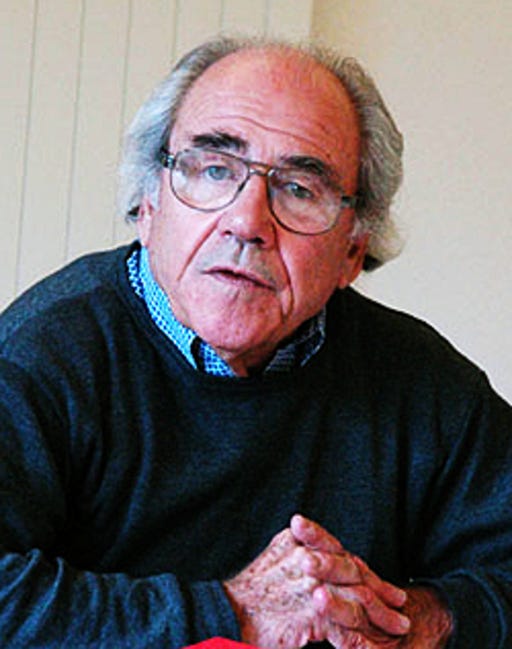

![The Sane Society [Book] The Sane Society [Book]](https://substackcdn.com/image/fetch/$s_!YMkA!,w_1456,c_limit,f_auto,q_auto:good,fl_progressive:steep/https%3A%2F%2Fsubstack-post-media.s3.amazonaws.com%2Fpublic%2Fimages%2Ff431584d-5253-4544-8bdb-645d978e1cf8_1400x2100.jpeg)



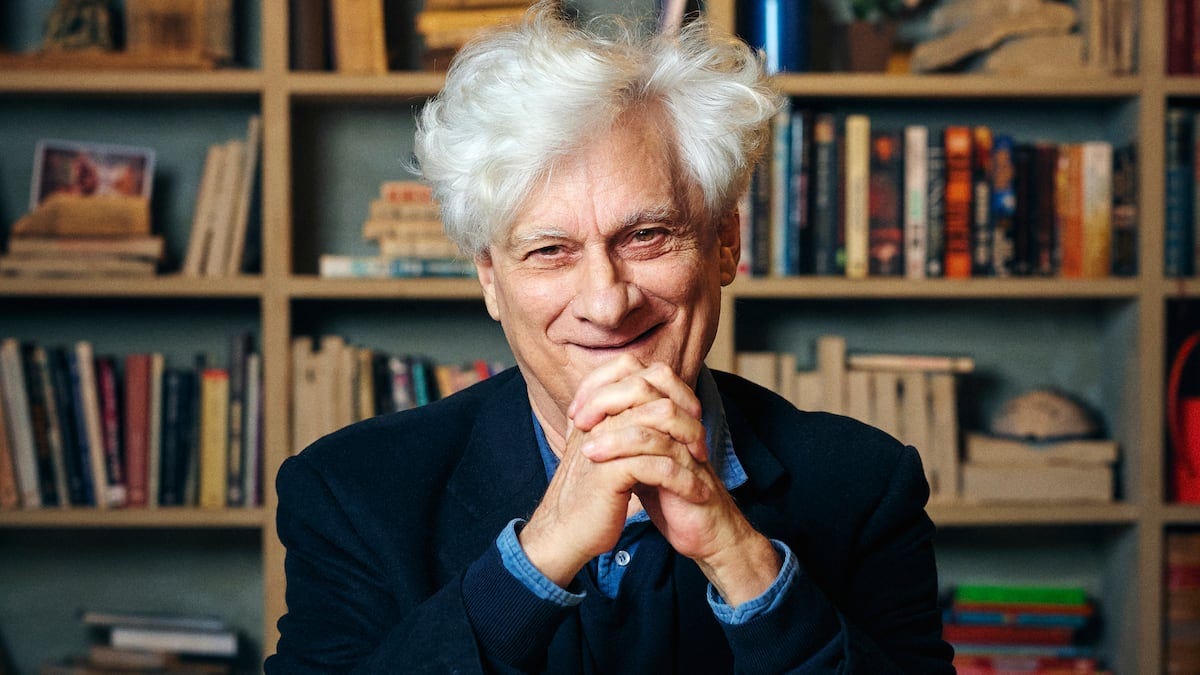
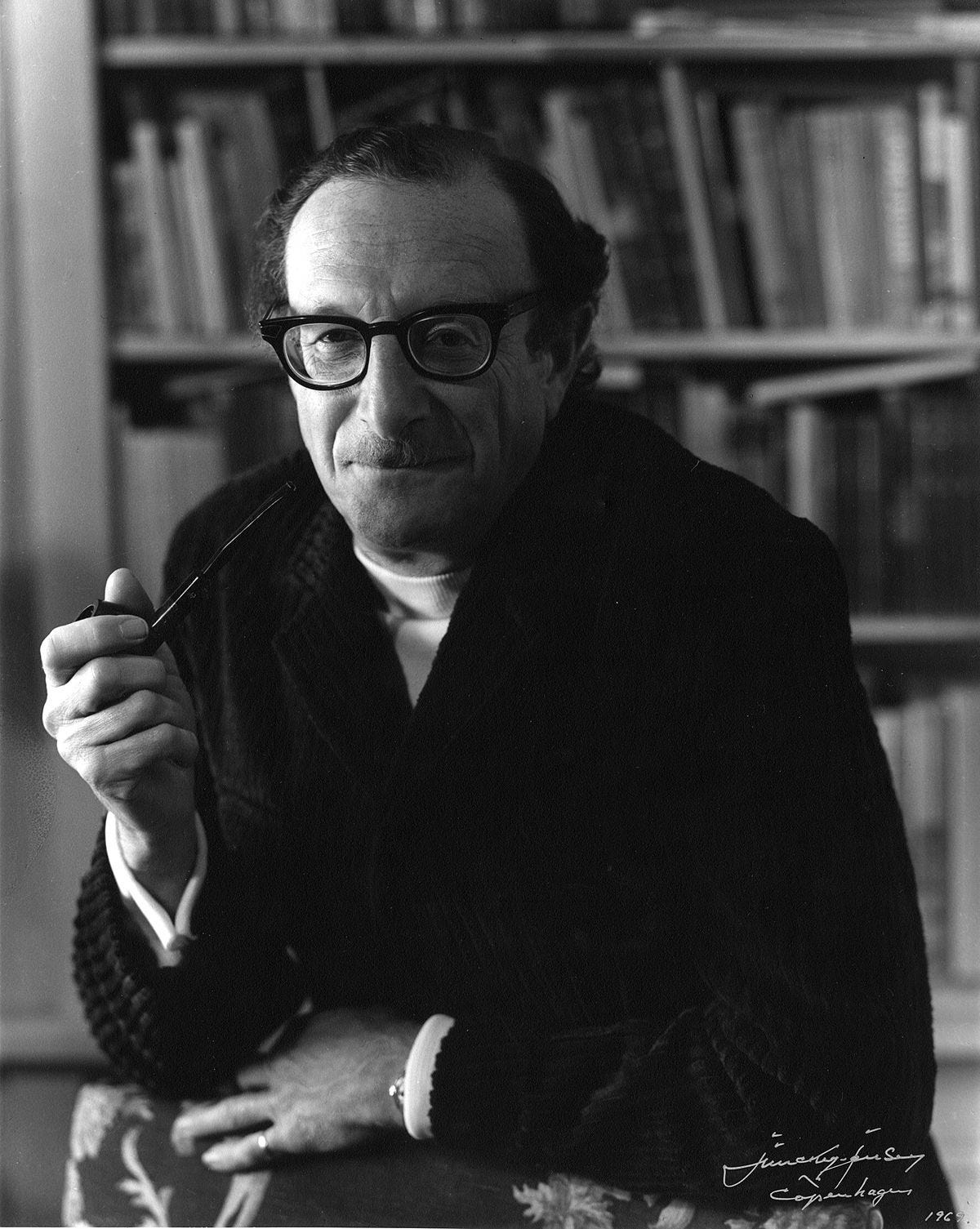

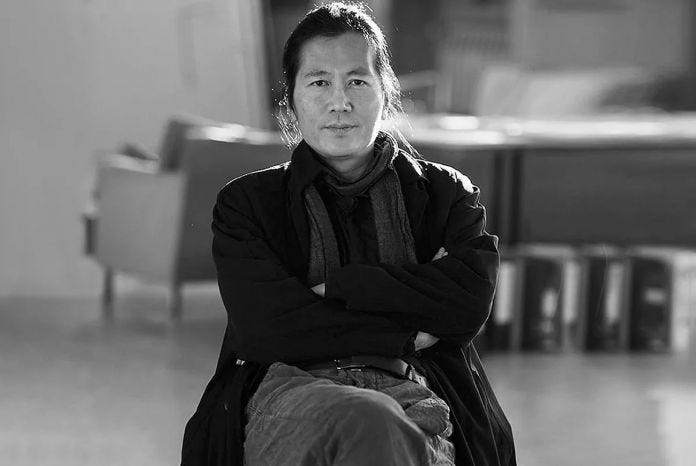
![Technologies of the New Real: Viral Contagion and Death of the Social (Digital Futures) by [Arthur Kroker, Marilouise Kroker] Technologies of the New Real: Viral Contagion and Death of the Social (Digital Futures) by [Arthur Kroker, Marilouise Kroker]](https://substackcdn.com/image/fetch/$s_!BS2S!,w_1456,c_limit,f_auto,q_auto:good,fl_progressive:steep/https%3A%2F%2Fsubstack-post-media.s3.amazonaws.com%2Fpublic%2Fimages%2F8a3ae499-bda3-4346-81d0-15aeeba7ec32_333x500.jpeg)


